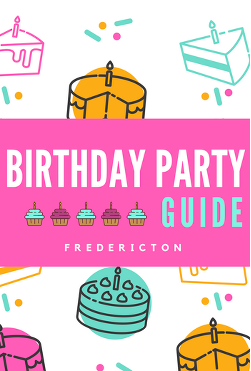.png)
This post is presented by Paul Bowman, of Bowman’s Pharmasave
With the mild spell of weather we had over the last week or so immediately we all start to think about spring being just around the corner. Although allergies can persist all year round we usually see a spike of people experiencing symptoms once the snow has gone and the city comes into bloom.
I get questions all the time on how to treat symptoms ranging from sneezing, runny or blocked nose, itchy eyes and scratchy throat – so let’s break down the treatment options out there to help make yourselves and your little ones more comfortable. Most seasonal allergies are caused by Pollen from trees, grasses and weeds or by mold spores, which grow when the weather is damp.
- Obviously step one is to try avoiding exposure to the allergen causing the problem – this isn’t always possible. If pollen is the offending allergen; air conditioning in the home can reduce pollen exposure and help control symptoms or keeping the windows closed if you don’t have air conditioning will work too. Also, giving kids a bath or shower at night to remove pollen from the skin and hair can help with nighttime symptoms during allergy season.
- It is important to treat seasonal allergies as studies have shown poorly controlled allergies can have impact on learning performance in children. Most kids don’t like the idea of nasal sprays so I don’t recommend these as a place to start with trying to treat symptoms. If an anti-histamine works well enough to control symptoms they are the ideal choice.
- The newer antihistamines, such as Claritin, Aerius and Reactine have the advantage of 24-hour action so only need to give one dose a day – which for any mom with a kid that doesn’t like to take medication will tell you is easier than trying to do it 3-4 times a day! The newer antihistamines also don’t tend to cause drowsiness and are the preferred choice.
- The older antihistamines, such as Benadryl have the benefit that they can be dosed every 4-6 hours so gives flexibility during the season to give more or less doses depending on symptoms. However, they tend to cause drowsiness and for this reason aren’t recommended as the first choice.
- Inhaled nasal steroids are the treatment of choice when an antihistamine fails to adequately control symptoms. This includes medications like Flonase and Nasonex. They can be safely used in kids over 3 or 4 years of age – using in children younger than this haven’t been studied and getting a 2 year to co-ordinate sniffing at the time of giving the nasal spray would be pretty much impossible. Using a steroid nasal spray is safe because the medication only tends to act on the sinuses without getting absorbed into other parts of the body. It is important to know that these sprays have to be used regularly for them to be effective and can take a few days to start working.
- If itchy, watery eyes are the main problem there are eye drops available both over the counter (for kids over 5) and by prescription (can be used in kids as young as 3) but again sometimes getting these into the eyes can be troublesome; so I would recommend trying an anti-histamine first to see if that helps the problem and if not then to try the eye drops. They worked really well for me growing up but I’m sure half of every bottle ended up running down my cheek instead of getting in my eye!
- Antihistamines work great for most symptoms of seasonal allergies and are the place to start with treatment. They don’t tend to help with blocked or congested noses and for younger kids (under 6) saline nasal drops or spray can help and for older children a decongestant can help with this particular symptom.
.png)
Until next month…
Paul
Meet Paul Bowman | Owner & Pharmacist of Bowman’s Pharmasave
 Paul was born and raised in Ellon, Scotland, located just outside the city of Aberdeen, Scotland. He completed his Masters of Pharmacy at Robert Gordons University in Aberdeen, Scotland. After working in Stirling, Scotland for a year as a staff pharmacist, he was recruited to work for a short term in Alberta as a pharmacist. What was supposed to be a two year stay in Canada has turned into 14 years, and he was thrilled to become a Canadian citizen in 2016.
Paul was born and raised in Ellon, Scotland, located just outside the city of Aberdeen, Scotland. He completed his Masters of Pharmacy at Robert Gordons University in Aberdeen, Scotland. After working in Stirling, Scotland for a year as a staff pharmacist, he was recruited to work for a short term in Alberta as a pharmacist. What was supposed to be a two year stay in Canada has turned into 14 years, and he was thrilled to become a Canadian citizen in 2016.
Paul has a passion for customer service having been in the service industry in one form or another since the age of 14. Paul loves helping patients find ways to improve their health and ensure they thrive. Paul will ensure that all patients and customers receive a great customer experience along with all the expert advice and guidance you would expect from your pharmacy team.
Paul and his wife Lindsay decided to make Fredericton their permanent home in 2015. They instantly fell in love with the city, the friendliness of the people, recreation amenities and the charming downtown core with all its great restaurants and shops.



















